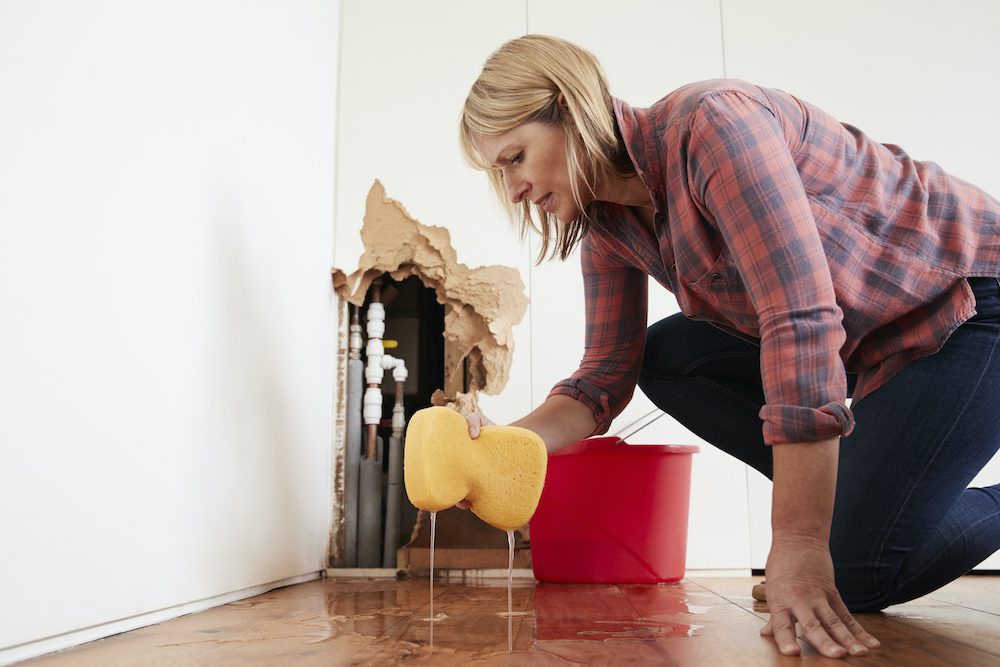6 Ways to Discover Concealed Water Leakages in Your House
CallJust about every person is bound to have their own unique way of thinking about Leaking water lines.

The minute you locate a leak, calling your plumber for fixings is the very best option. Some little water leaks might not be visible. If you can not find it with your naked eyes, below are some hacks that help.
Early discovery of dripping water lines can reduce a potential catastrophe. Aside from saving you cash, it will certainly lessen the stress and also aggravation.
Examine Water Intake
If you identify sudden modifications, in spite of your consumption being the same, it suggests that you have leaks in your plumbing system. A sudden spike in your costs shows a fast-moving leak.
At the same time, a constant increase on a monthly basis, despite having the same habits, reveals you have a slow-moving leak that's likewise slowly rising. Call a plumber to thoroughly examine your property, especially if you feel a cozy location on your flooring with piping underneath.
Check and also Evaluate the Situation
Homeowners must make it a practice to examine under the sink counters as well as also inside cabinets for any kind of bad odor or mold and mildew development. These two warnings indicate a leak so prompt interest is called for. Doing regular assessments, even bi-annually, can save you from a major issue.
Take A Look At the Water Meter
Every house has a water meter. Inspecting it is a surefire way that assists you find leakages. For starters, turn off all the water resources. Guarantee no person will flush, use the tap, shower, run the cleaning machine or dishwashing machine. From there, go to the meter and also watch if it will certainly change. Considering that no one is using it, there ought to be no activities. If it moves, that indicates a fast-moving leakage. If you find no changes, wait an hour or two and check back again. This suggests you may have a sluggish leakage that can even be below ground.
Asses Exterior Lines
Do not forget to check your outside water lines too. Test faucets by attaching a garden tube. Ought to water seep out of the connection, you have a loosened rubber gasket. Replace this and also make certain all connections are limited. It will aid get it skillfully checked out and preserved every year if you've got a sprinkler system. One small leakage can waste tons of water and increase your water bill.
Do a Food Coloring Examination
When it comes to water usage, 30% comes from bathrooms. If the shade in some way infiltrates your bowl throughout that time without flushing, there's a leakage between the container and bowl.
Check for discolorations and weakening as many devices as well as pipes have a life expectations. If you presume leaking water lines in your plumbing system, do not wait for it to escalate.
The moment you find a leak, calling your plumber for repairs is the ideal option. Some tiny water leakages may not be visible. Checking it is a surefire method that aids you discover leaks. One little leak can throw away bunches of water and surge your water costs.
If you presume leaking water lines in your plumbing system, don't wait for it to escalate.
WARNING SIGNS OF WATER LEAKAGE BEHIND THE WALL
PERSISTENT MUSTY ODORS
As water slowly drips from a leaky pipe inside the wall, flooring and sheetrock stay damp and develop an odor similar to wet cardboard. It generates a musty smell that can help you find hidden leaks.
MOLD IN UNUSUAL AREAS
Mold usually grows in wet areas like kitchens, baths and laundry rooms. If you spot the stuff on walls or baseboards in other rooms of the house, it’s a good indicator of undetected water leaks.
STAINS THAT GROW
When mold thrives around a leaky pipe, it sometimes takes hold on the inside surface of the affected wall. A growing stain on otherwise clean sheetrock is often your sign of a hidden plumbing problem.
PEELING OR BUBBLING WALLPAPER / PAINT
This clue is easy to miss in rooms that don’t get much use. When you see wallpaper separating along seams or paint bubbling or flaking off the wall, blame sheetrock that stays wet because of an undetected leak.
BUCKLED CEILINGS AND STAINED FLOORS
If ceilings or floors in bathrooms, kitchens or laundry areas develop structural problems, don’t rule out constant damp inside the walls. Wet sheetrock can affect adjacent framing, flooring and ceilings.
https://www.servicemasterbyzaba.com/blog/how-to-detect-water-leakage-in-walls/

As a devoted reader on Finding hidden leaks, I figured sharing that post was really useful. Please take the opportunity to share this write-up if you liked it. Kudos for your time. Please come by our site back soon.